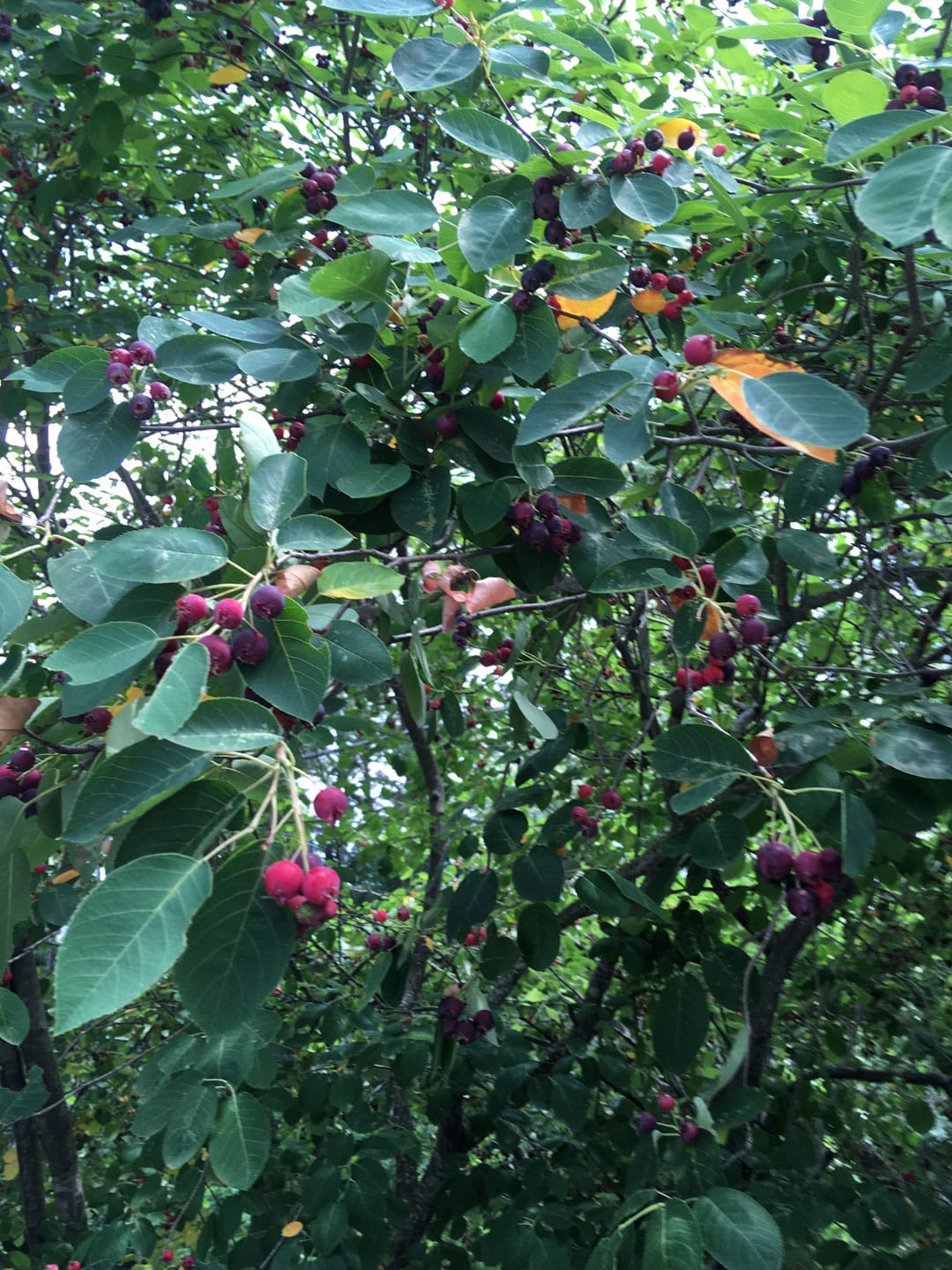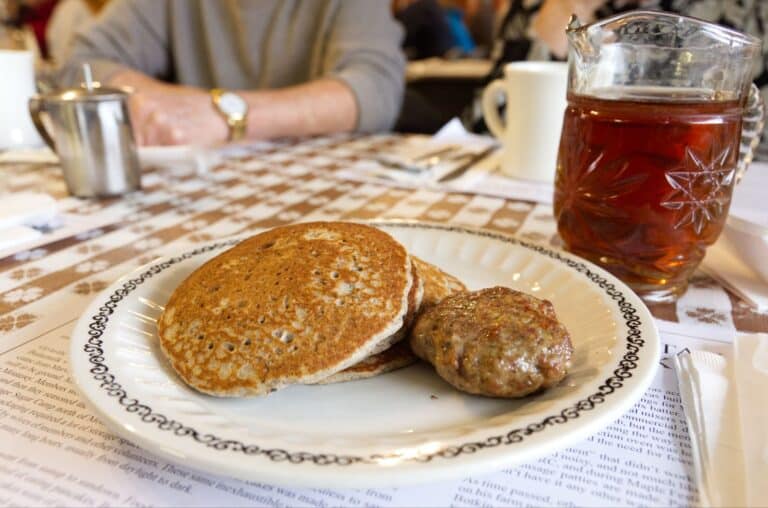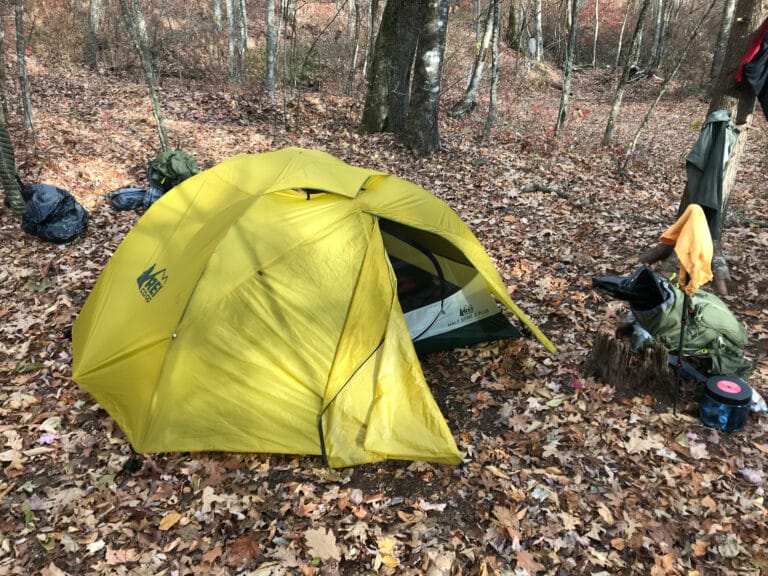“All good things are wild and free.”
–Henry David Thoreau
Each Memorial Day, I visit the library even though it’s closed. In fact, I go because it’s closed.
With the parking lot empty, I maneuver my pickup between two Amelanchier trees I make this pilgrimage to see. I position the front end facing out so that I can stand in the truck bed to pick purplish orbs with great delight. Sometimes I stand on a step stool and, when I can no longer safely reach, I forfeit the uppermost fruit to birds.
Some say these trees acquired their most commonly used name, serviceberry, because, in olden days, they bloomed around the time that muddy roads became passable for circuit-riding preachers to resume church services in rural towns. This seems fitting since my gathering of berries is as much a spiritual quest as foraging for food. Though “berry” is a misnomer; they’re really pomes. Ovaries and flower parts fuse to form pome fruit, whereas berries grow from a single flower with a single ovary. Biology aside, I love serviceberries for their wildness and for being free.
Often when I’m picking, library patrons call to me across the parking lot. “What are they?” they shout in a friendly way.
“Serviceberries!” I respond, thrilled to connect with anyone who wants to know.
“What’s that?” some will ask.
The serviceberry tree is a member of the Rosaceae family, which includes roses and many flowering, fruiting trees and shrubs. They’re deciduous and found throughout the Northern Hemisphere, offering four-season delights with their vibrant white blossoms, bright pomes, and autumn leaf colors. The name Juneberry is also used since most of the fruit ripens in that month. Other names—shadbush and shadblow—refer to the fish that run and spawn in that brief season when serviceberries bloom. Another name, sarvisberry, pays homage to the way that rural folk pronounced the word ‘service’ in Appalachia not so long ago.
I love serviceberry trees for their generosity, for how they serve humanity by providing shade, as well as sustenance for pollinators and for birds. Each person I encounter while visiting these trees seems overjoyed. Adults smile like small children making new discoveries. Amazing! Their beaming faces seem to say. Food is growing near where we park our cars!
Invariably, some who see me filling yogurt containers ask, “What do they taste like?” When I’m feeling generous, I hand some delicate fruit down from my elevated perch so they can taste and determine for themselves. To me, they taste like a cross between a cherry and a blueberry, with a nutty aftertaste. Though highly prized for making jams and pies, I love to eat them freshly picked, preferably just after a pleasant rain.
I believe my relationship to serviceberry trees in pleasant rains has made me a more pleasant person. I always feel lighter, more reverential, even slightly holy, when in their presence. When visiting serviceberry trees, I’m in love with life and feel like singing (despite being tone-deaf); I feel energized and want others to embrace this simple yet wondrous feeling too.
Well, most of the time.
One Sunday near the summer equinox, a woman snaps me from my silent revelry to ask, “Are they any good?” She startles me, really, just as I’ve popped serviceberries into my mouth. I devour them quickly but do not speak. Truly, I’m at a loss.
You see, it’s the end of the picking season; this is my final trip, and not much fruit remains. I’ll be lucky to get half a cup. Three weeks ago, I would have been more than happy to tell her all about serviceberries and how they taste. They’re wonderful! I would have said. Have some of mine! I’d have been as generous as the tree itself, giving her my spare container so she could join me and pick all that she could reach.
But today I feel the way I felt during the early days of the pandemic when I had to arm wrestle a burly man for the last roll of toilet paper at the grocery store. Down to my final few serviceberries, I shrug.
As much as I know that I should share and that sharing is the right thing to do, I’m afraid to make eye contact with the hungry-looking woman for fear of the shame I’ll feel when faced with her kind but pleading eyes. I don’t mind sharing with birds, I think, but these are my last berries until next year.
And so I mumble, “They’re…okay.” (Forgive me is what I should have said.)
After all, Thoreau might have said that all good things are wild and free, but I don’t recall him saying anything about how sharing one’s dwindling supply of good things does a fellow any good.
Watching the stranger trudge—empty-handed and empty-mouthed—to her SUV, I feel guilty. And yet, I’m only human. As much as the serviceberry tree has taught me, I realize that I still have much to learn and far to go.
We can only aspire to be trees.








